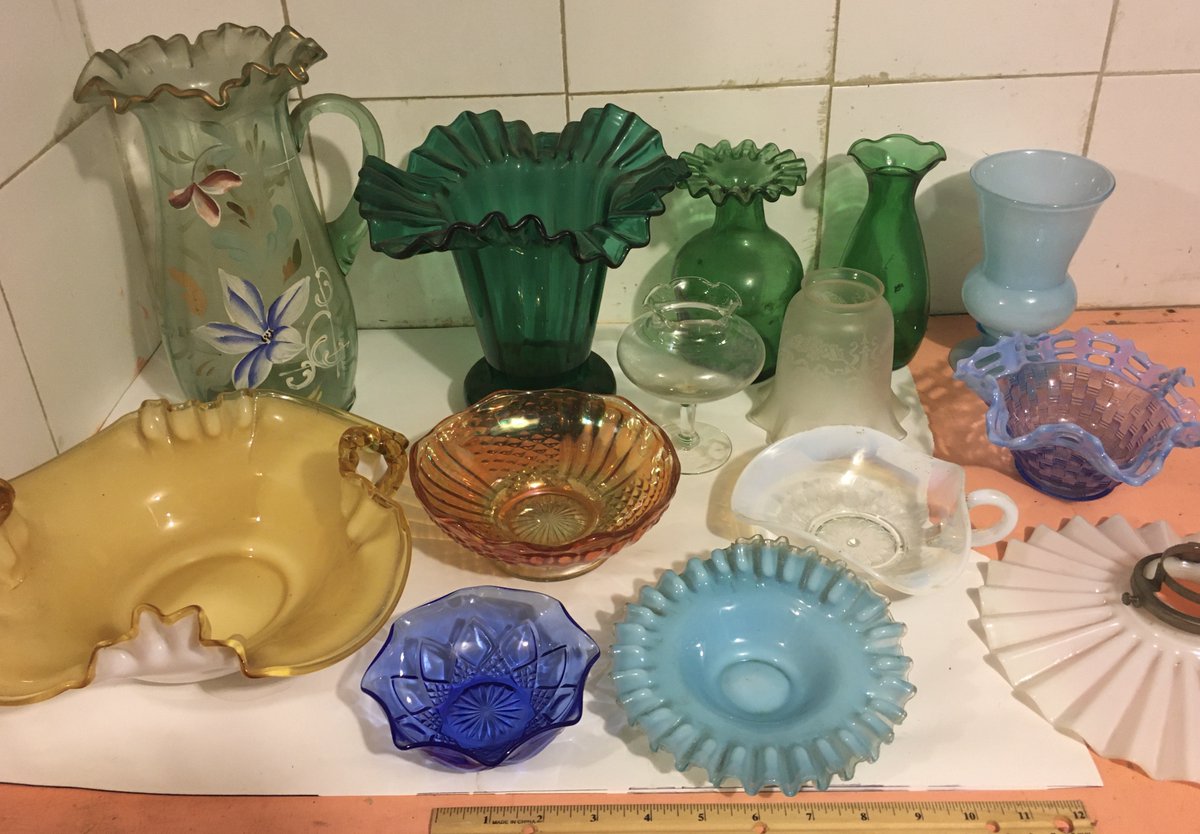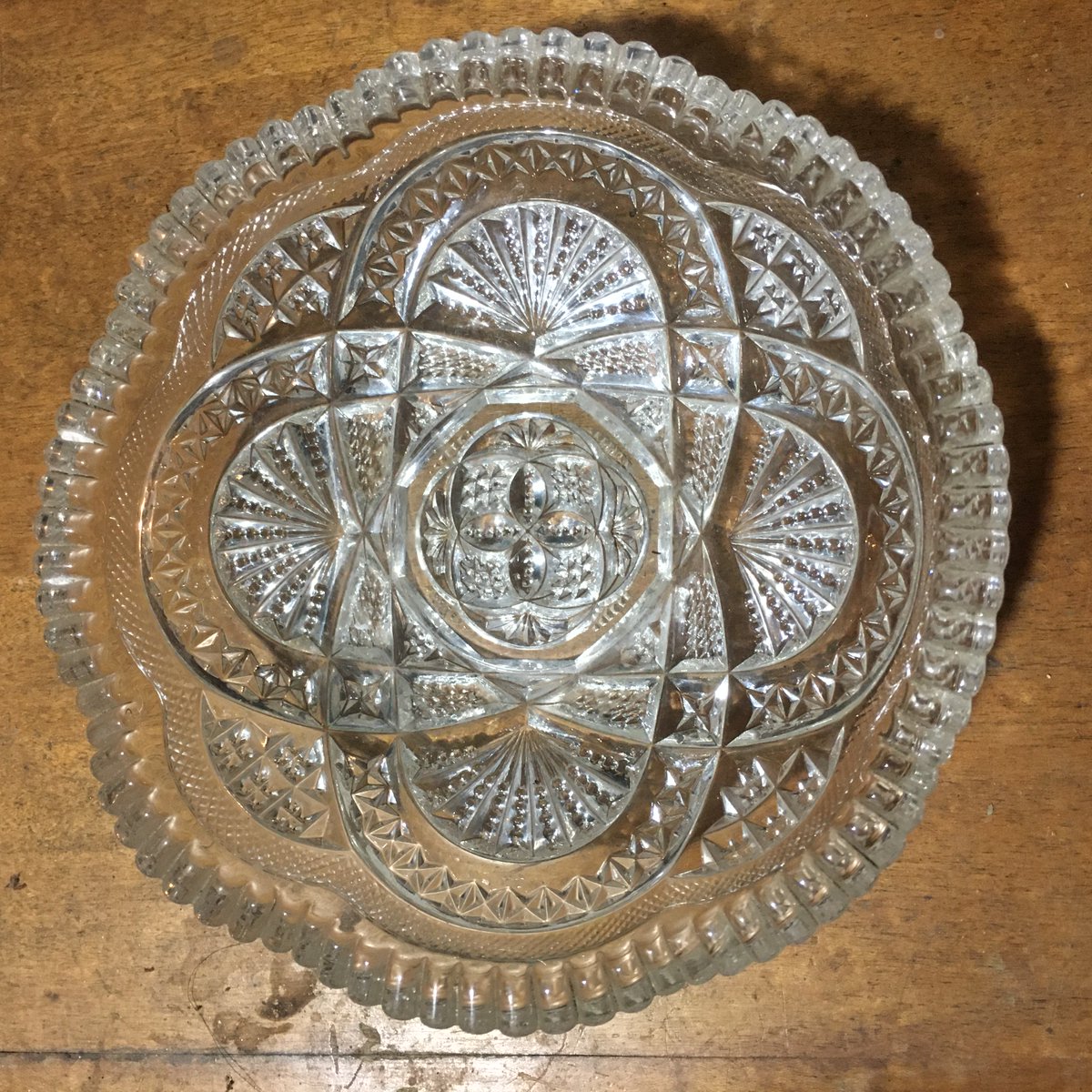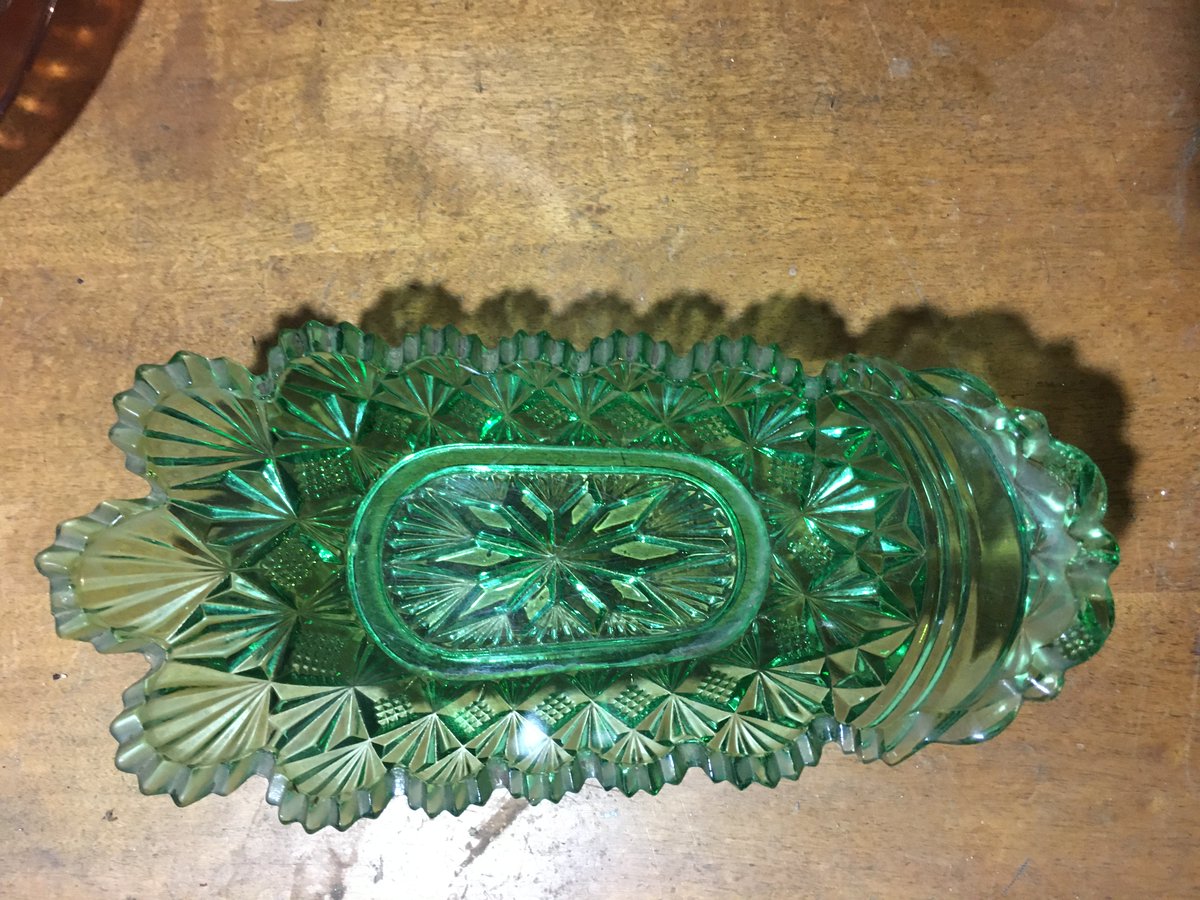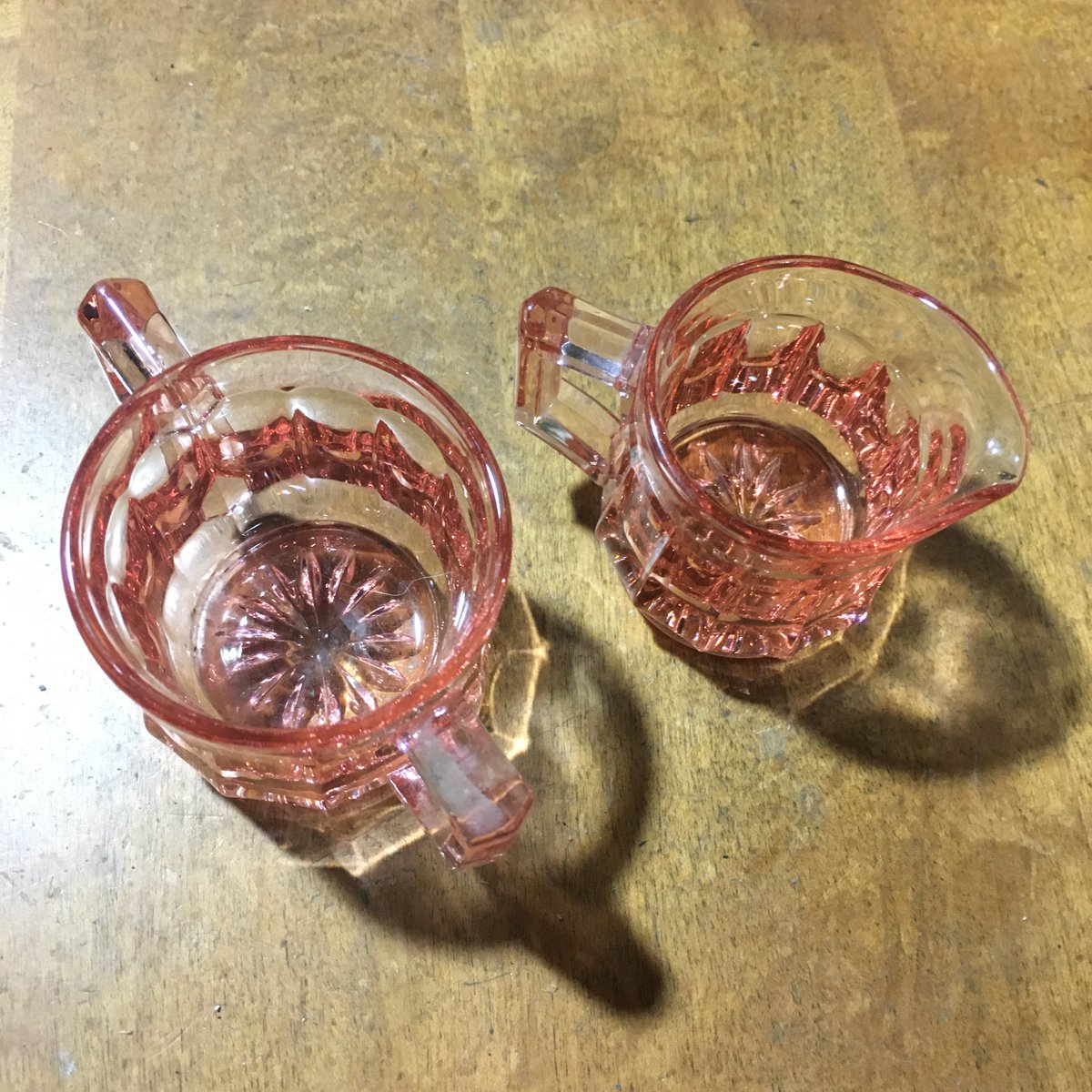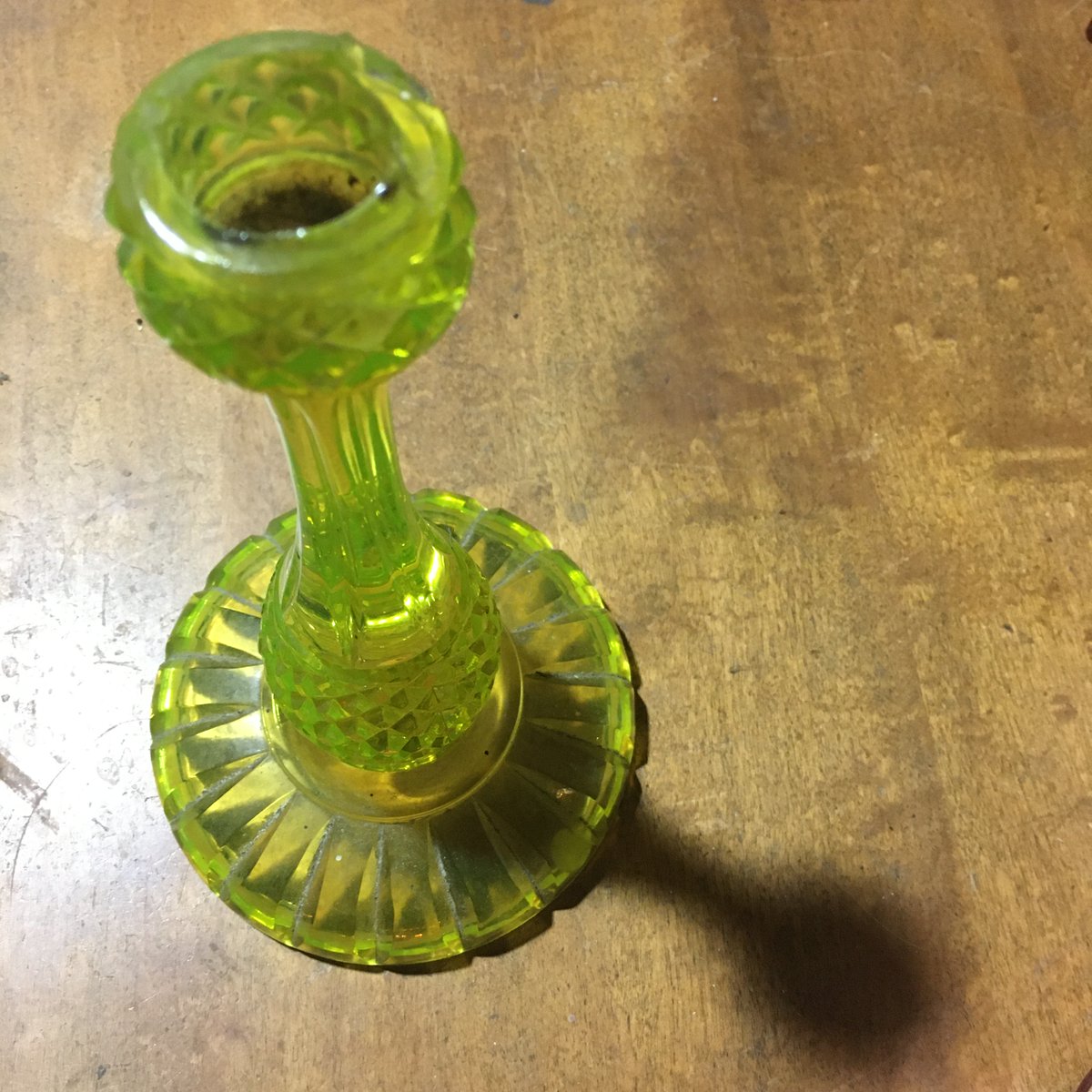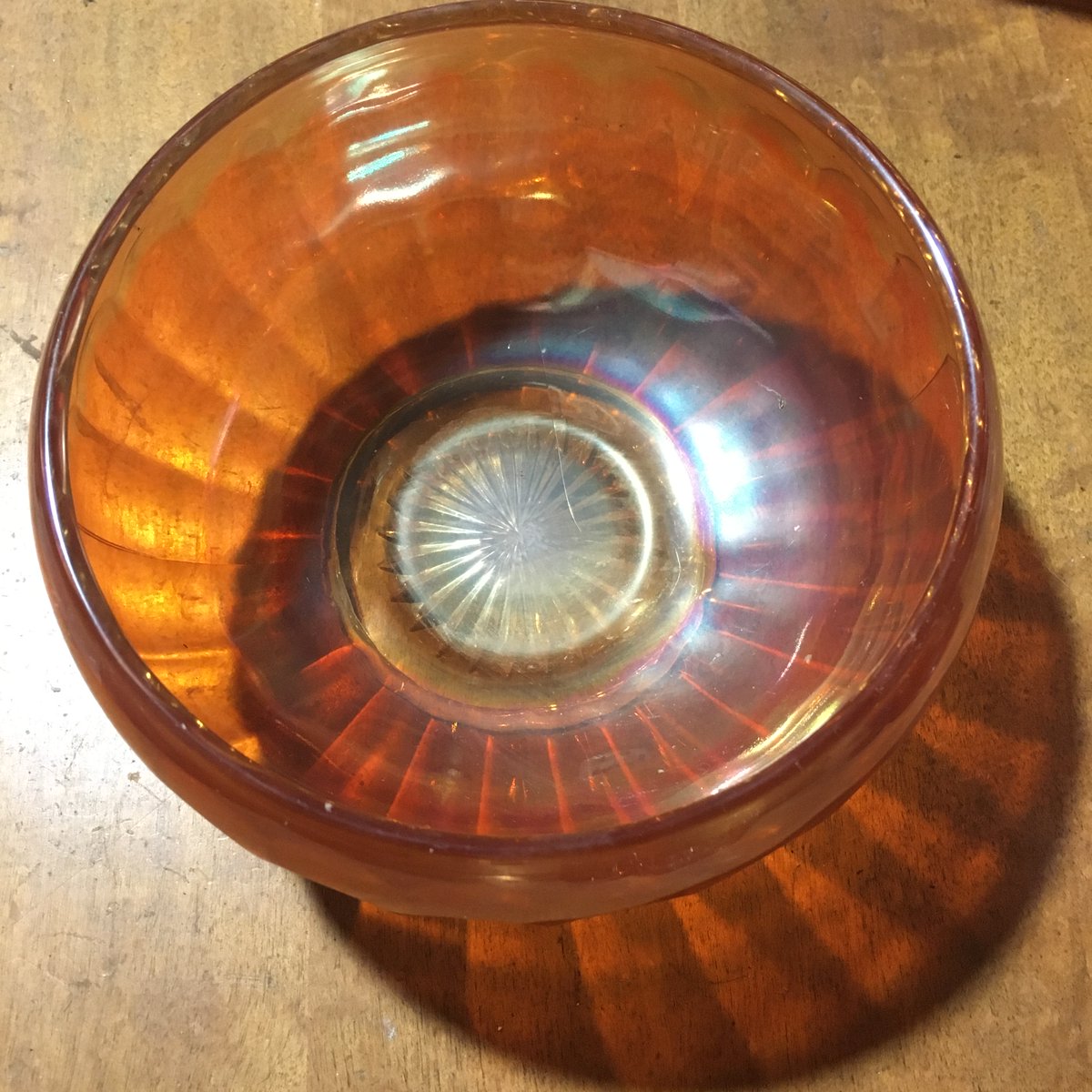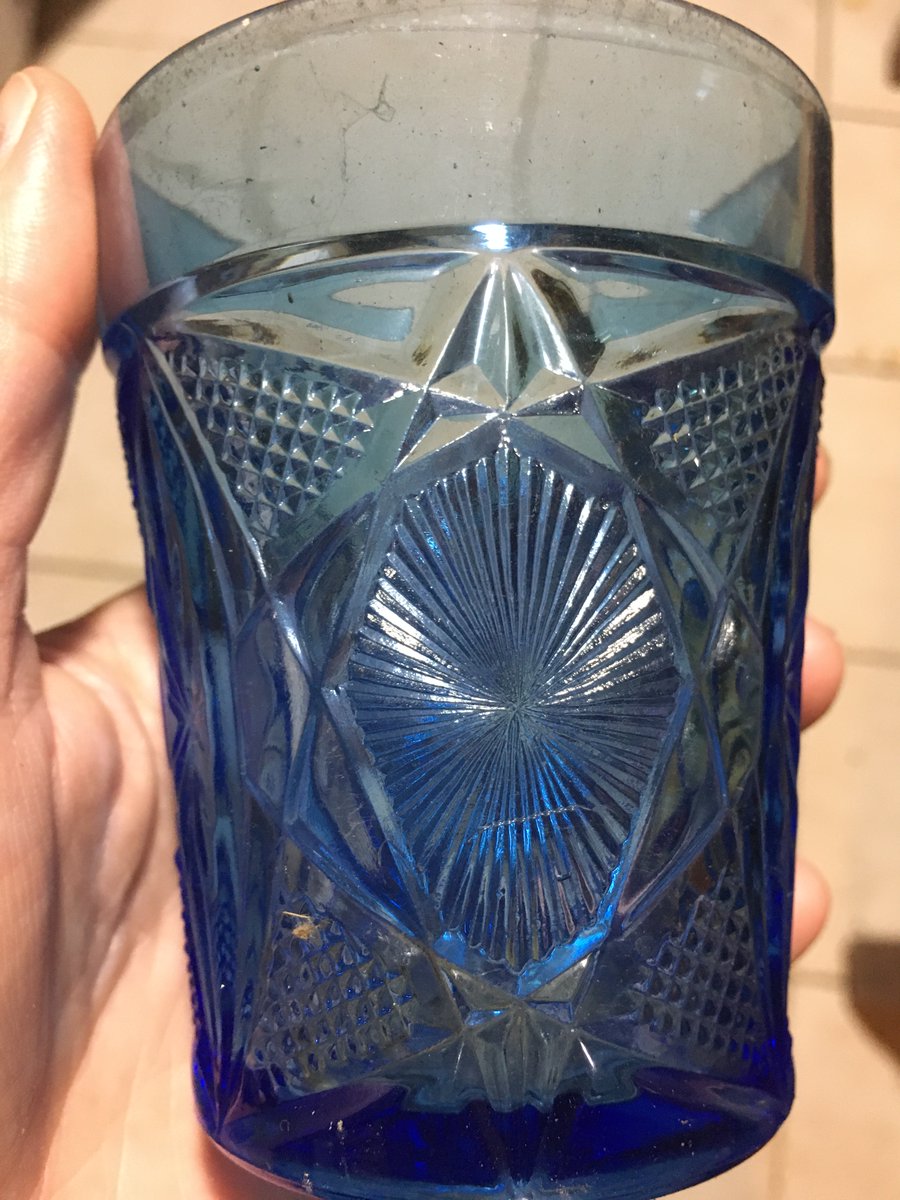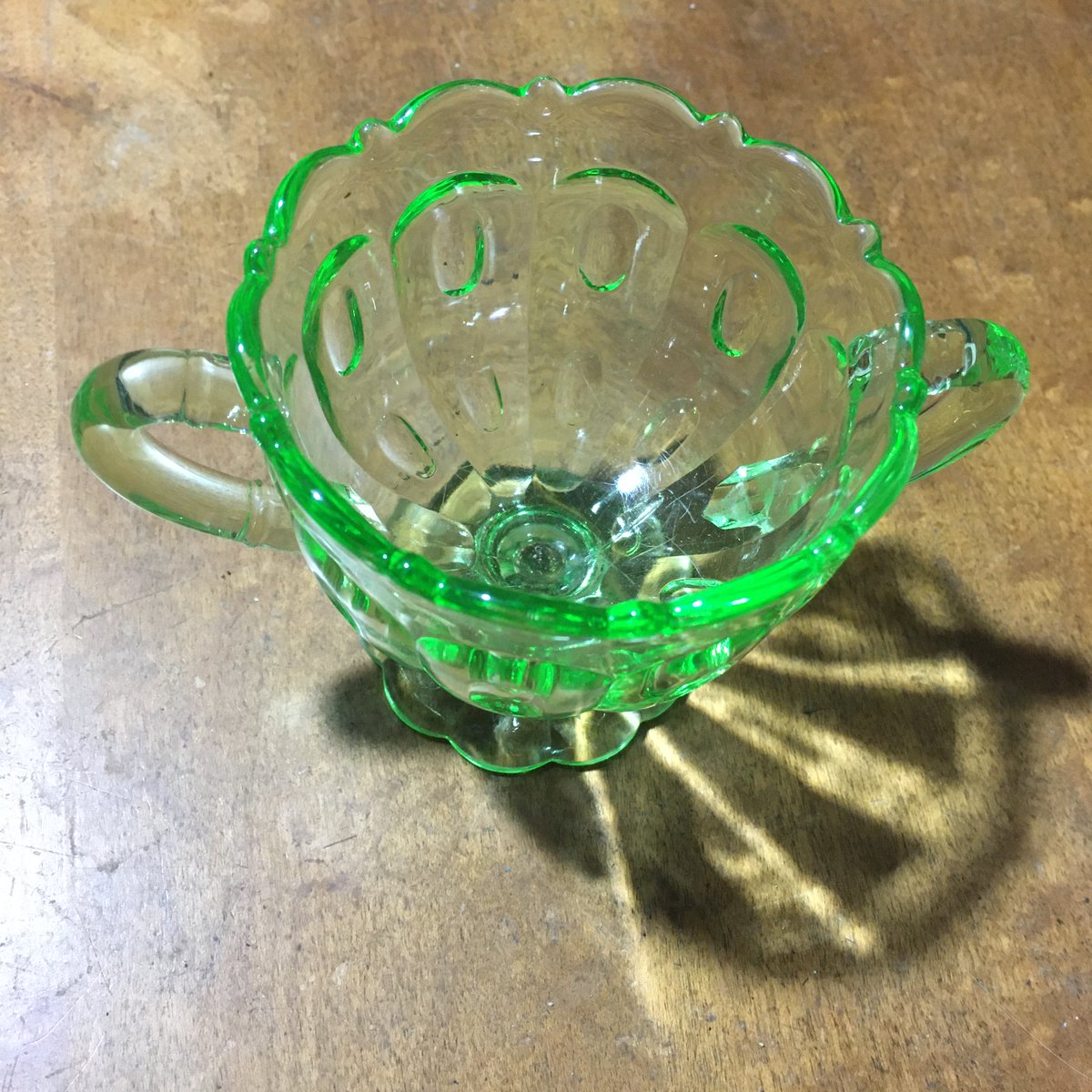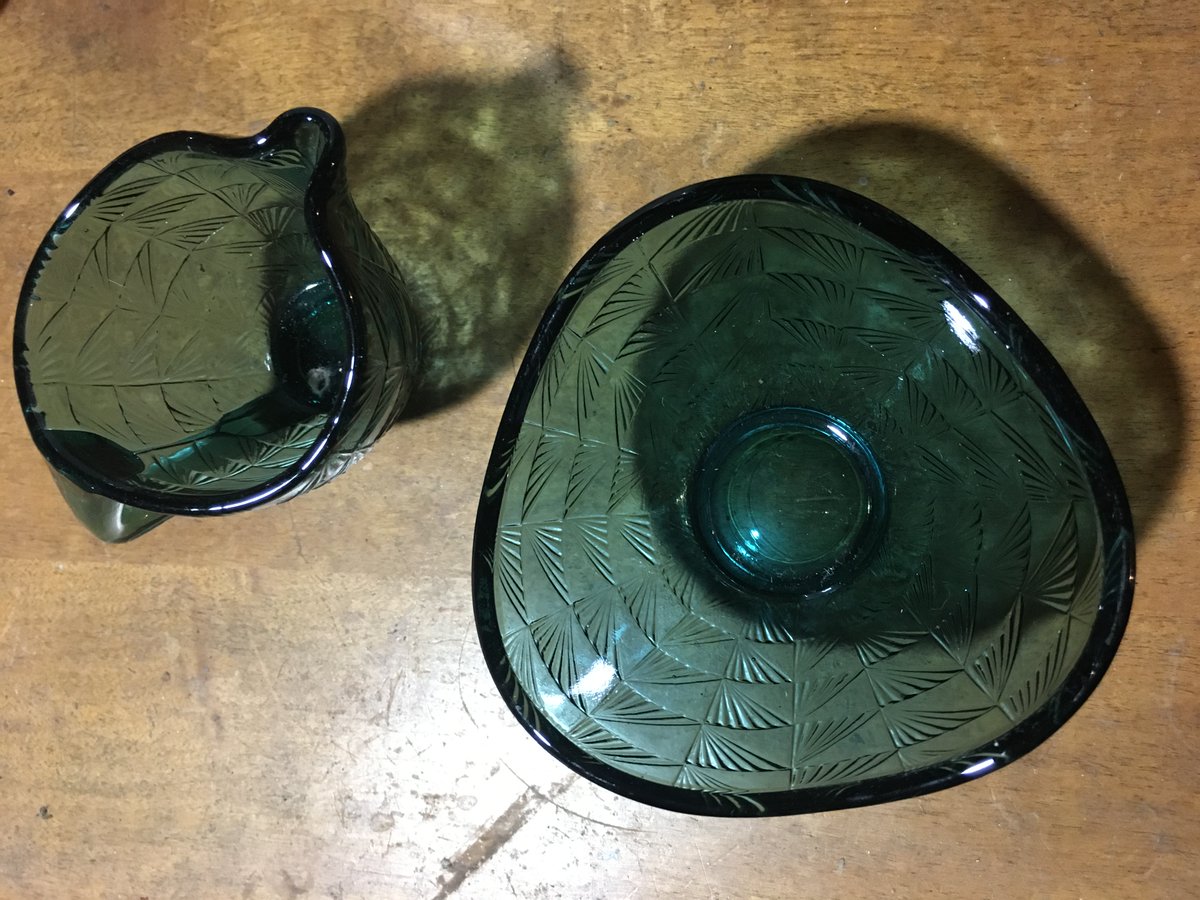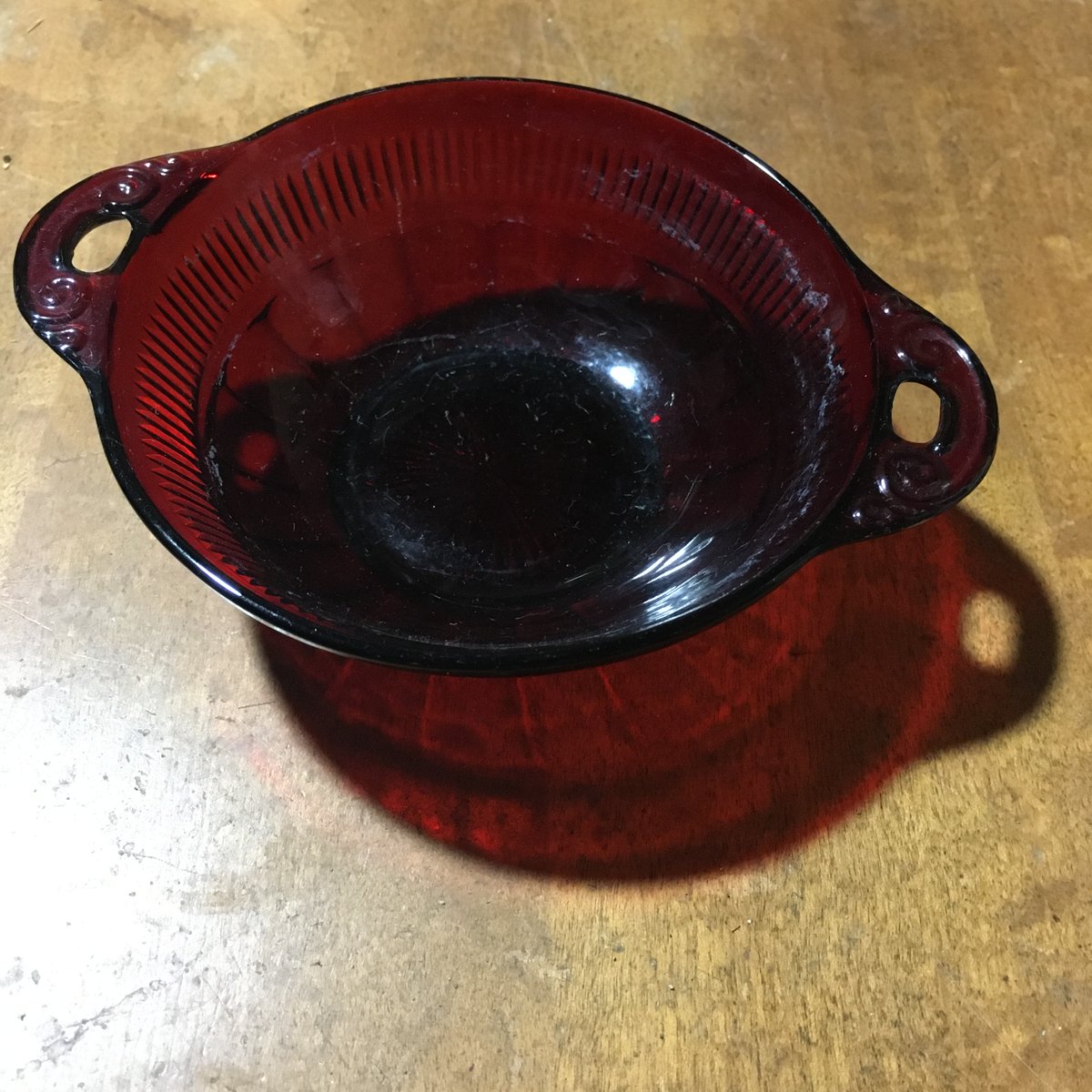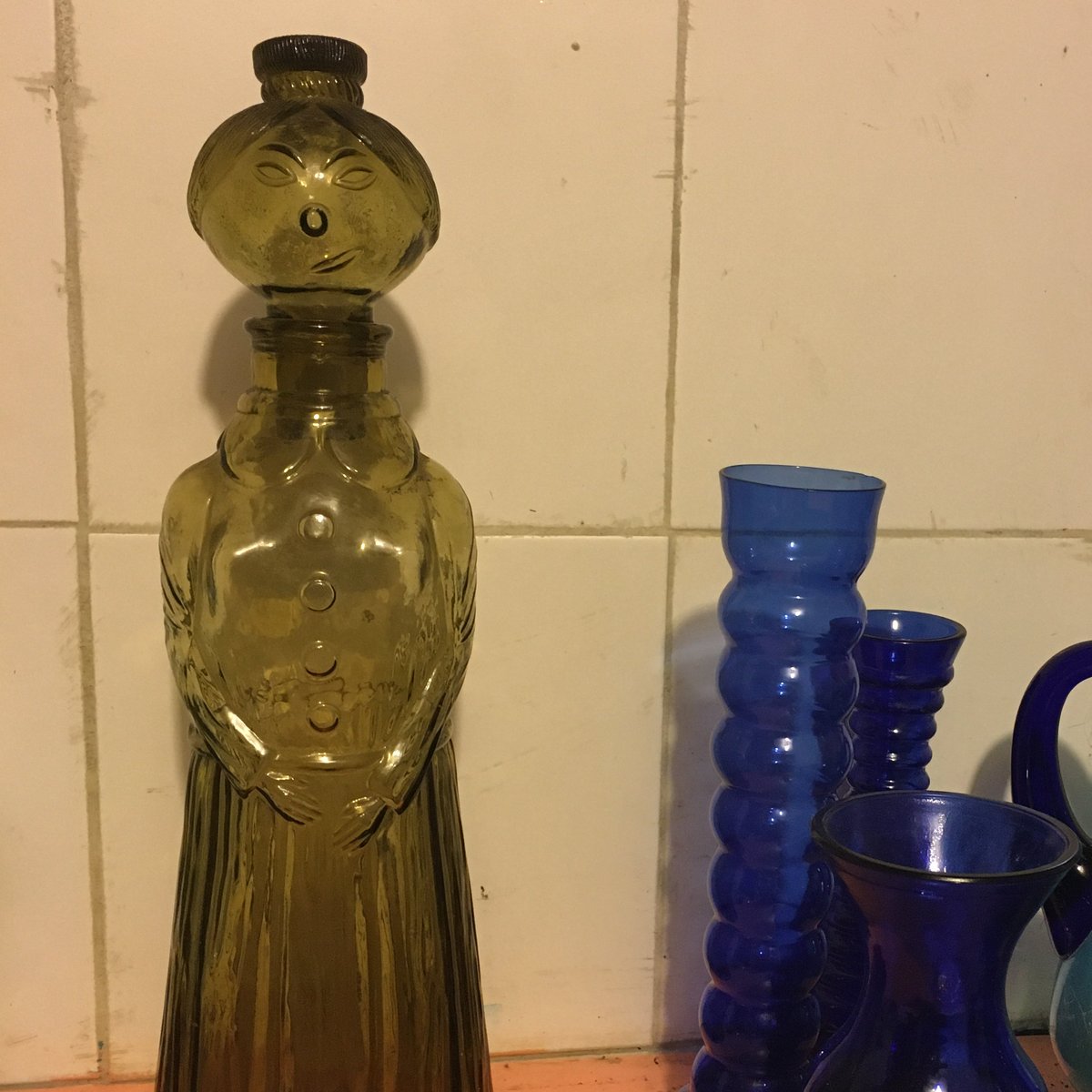These were in a box labeled "fluted glass", meaning the edge is ruffled or rippled or, y& #39;know, fluted. Not a single one of these has a maker& #39;s mark, and some of them are cracked, but I can make some inferences.
The hand-painted vase or pitcher /might/ be Fenton, c. 1950-1970, and that& #39;s very likely water soluble paint. It has a not-very-noticable crack under the handle. The large teal vase has a really rough pontil mark on the base, which mean& #39;s its NOT a fancy 20th c glassmaker.
The big butterscotch dish with the milk glass outside and the clear amber rim and handles /could/ be a big-name piece, but there& #39;s no label and there& #39;s a crack in the surface near one handle.
Really, the most historically interesting thing here to me is the white milkglass shade or reflector, with the adjustable metal ring. Probably safe to put c. 1925 on that, +/- 10 years.
The pale blue piece that looks like a vase is actually the broken off base (?) of something else, but it& #39;s a really clean break, so probably was blown or molded and then attached to a separate piece, so there was a join to break along.
Cut-glass, as a technique for catching & amplifying light, arrives on the scene around 1850 & lasts ~100 years. There are a LOT of glass producers, from very high end to very cheap. That first clear bowl is cut-glass. The higher the lead content, the sharper the angles can be.
"Depression glass" and "carnival glass" refer to a wide range of decorative pieces that either came free with purchase or that were given as prizes, and sometimes the gaudier the better.
In the 1980s, plenty of this stuff was going for top dollar, as production dropped off & a lot of it was still sitting in the homes of those who bought it to start with; now you can get pieces /for/ a dollar, as homes & generations have shifted and so much more is available.
The issue for the LHS is: how do I evaluate the story when there& #39;s no makers marks & no oral history to connect /any/ of the pieces?! This might be 1930 Vaseline glass piece, or it might be a 1990 reproduction. Finding an expert who could tell very likely means time & money.
Unfortunately, that puts it down to what is representative of the era, or the area. This light blue cream & sugar set with "pine needle" etching could be 1930s or 1960s. It& #39;s for sure not 1800s due to the kinda "space age" styling.
This little ruby red trinket dish is one piece I& #39;ve been able to date: 1940s dessert dish, Anchor Hocking Co, Coronation pattern.
These small blue vases probably range from 1920 to 2010, and some of them you could buy at Target today.

 Read on Twitter
Read on Twitter